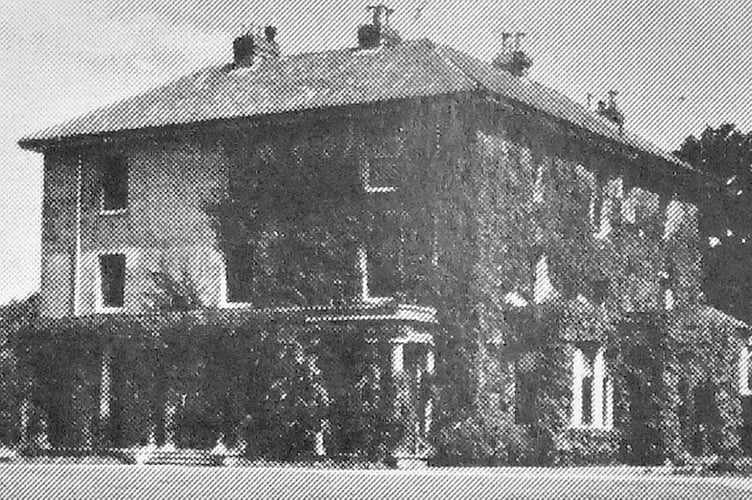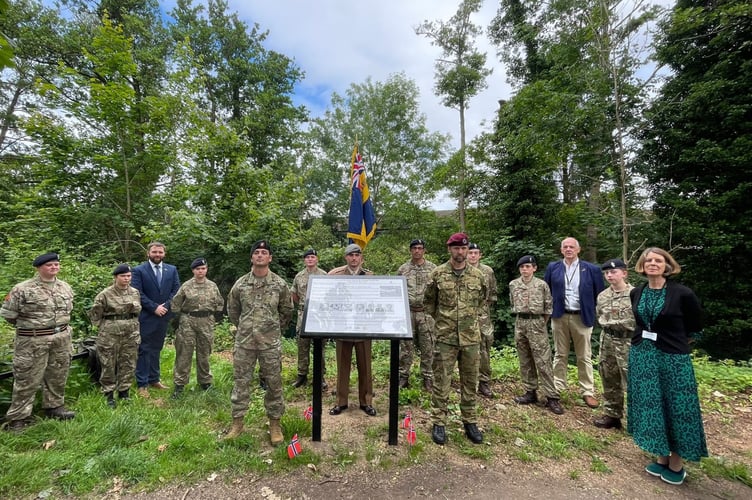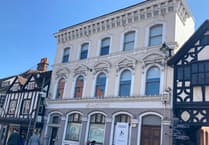One of East Hampshire’s biggest secrets has been revealed as a board detailing the role a country house in Liss played in WWII espionage has been unveiled.
Stodham House played a crucial part in the defeat of the Nazis and the creation of today’s US and UK special operation units as the former home of Petersfield’s wartime MP was a spy school.
The house – codenamed Special Training School 3 (STS3) - served as a preliminary school for the training of Norwegian secret agents who would later infiltrate Nazi-occupied Norway to train resistance organisations and carry out acts of sabotage.

And it wasn’t the only spy training which took place locally as students from a similar school in Hertfordshire were sent to the Longmoor Military Railway to learn about sabotaging railway lines and engines.
The role Stodham played in the war effort is detailed on an information board recently unveiled next to Liss Station at the southern end of Riverside Railway Walk.
The board was created by The Secret WWII Learning Network with support from Liss Parish Council and district councillor Roger Mullenger.
Representatives from British, US and Norwegian special forces and special operations personnel came to the official unveiling along with attendees from Longmoor Camp, Liss Royal British Legion and figures from the Bordon and Alton platoons of the Army Cadet Force.
Spy schools were set up around the UK in 1940 by a secret organisation called the Special Operations Executive (SOE) with the aim of undertaking subversion and sabotage in enemy-occupied territory.
The SOE moved into Stodham House in January 1941. It was initially the depot and preliminary school for Norwegian trainee secret agents, who reported to the Nordic country’s equivalent of SOE

The first cohort of trainees agents arrived three months later for elementary military training and assessment. They were given lessons in field craft, weapons training, explosives and demolition, signally and communication, report writing and map reading.
A typical preliminary course lasted for two to three weeks with successful students progressing to more detailed training elsewhere in England and Scotland.
Saboteurs who received initial training in Liss including those who went on to parachute into Nazi-occupied Norway to destroy the ‘heavy water’ stocks crucial to the enemy’s atomic weapons programme.
The successful operation was considered one of the most critical sabotage acts of WWII while another STS3 graduate, Major Max Manus, managed to sabotage two ships and badly damaged a third in Oslo harbour in April 1943. The saboteur – considered “the comedian of the party” during his time in Liss – was decorated by the Norwegian and British governments for his heroic acts.
Stodham also accepted groups of British, Belgian, Dutch and Czechoslovak trainees and provided the initial psychological and aptitude assessment for British and American officers who would later infiltrate enemy lines in occupied Europe.
It later ran courses on foreign weapons and was used for the assessment and training of German army prisoners of war who defected to the Allies.
The school closed in 1945 before reverting back to private ownership.





Comments
This article has no comments yet. Be the first to leave a comment.